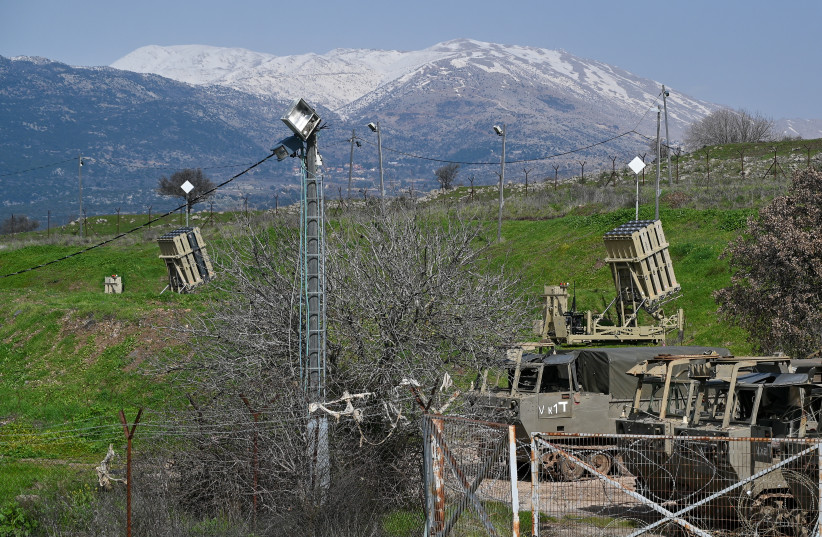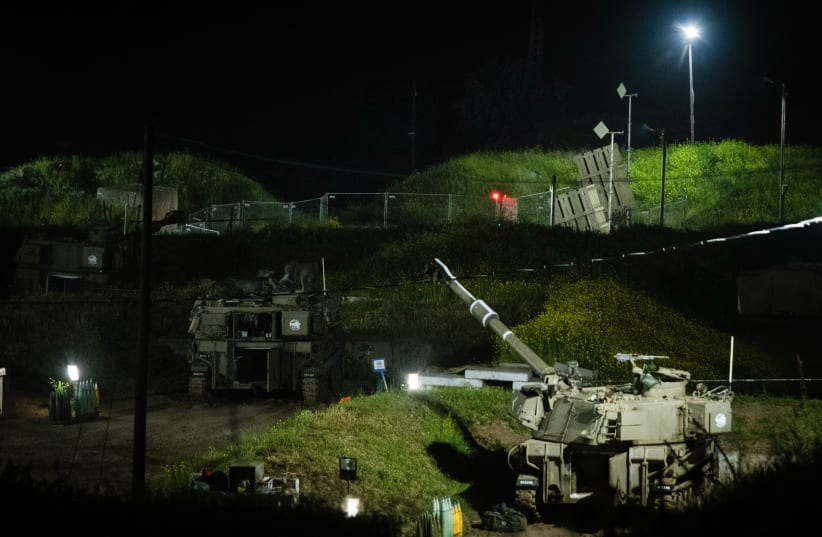Israel and Iran faced off in ten days of conflict this month. This is a conflict that was driven by Iranian-backed groups, such as Hamas, Hezbollah, Palestinian Islamic Jihad and others in Gaza, Lebanon and the West Bank. These ten days of clashes followed Syrian and Iranian media reports of Israeli airstrikes in Syria and also were bookended by Iranian threats to US forces in Syria.
It’s worth looking back at these ten days to see what lessons might be learned. It’s also possible these ten days were only a prelude to another round of conflict. Time will tell how important the April 2023 tensions were.
Similarities to March 2021
One of the key takeaways from the clashes in early April is that it has striking similarity to the way Iran helped create similar clashes in May 2021, during a different ten day conflict. The conflict in May 2021 took place after Ramadan tensions led to clashes in Jerusalem and Hamas claimed it had a right to fire rockets at Israel in response.
This is the usual Hamas rhetoric about “responding,” but the overall point is that Israel had the experience of the May 2021 conflict to look at in focusing on the April 2023 tensions. It’s not clear if the lessons of 2021 were learned and this appears to have enabled another round this year.
Considering how the May 2021 conflict unfolded it does not appear Hamas, Hezbollah, PIJ or Iran feel deterred. This problem has been noted in other reports we have had at the Post in recent days. One lesson then is that Iran is trying to strengthen the groups it backs and expand their area of operations.


For instance, Israel has been seeking to defeat PIJ in the West Bank over the past year in clashes in Jenin. However, shooting attacks in the West Bank have increased over the past year, which means the pressure on the terror groups has not subdued them completely.
Another example comes from how Iran sought to expand Palestinian operations in Lebanon. Iran’s methods in 2023 were a bit different than in 2021, but its overall posture is the same. It wants to threaten Israel with a multi-front conflict, showing that it can have its allies fire rockets from Lebanon, Syria and Gaza. The presence of these rocket firing squads raises questions about whether Iran has empowered Hamas in Lebanon, creating a secondary “unit” in essence for Hezbollah to rely on, meaning Hezbollah can operationalize Palestinian groups when it wants to threaten Israel and thus avoid a direct conflict.
Another question the ten-day conflict raises is whether Iran’s entrenchment in Syria is suffering. Iran and Syrian media reported four rounds of Israeli airstrikes in the days leading up to April 3. Iran appeared to initially respond by flying a drone into Israeli airspace over the Golan. Then Hamas leader Ismael Haniyeh flew to Lebanon and 34 rockets were launched at Israel. Iran appeared to then operationalize a rocket squad in southern Syria near the Golan.
This would have been in coordination with the Syrian regime which is supposed to control the area near the Golan. Key questions remain about how Iran was linked to the rocket fire and how closely it coordinated between the multiple fronts involved. Either way, the ten days shows that rockets can be fired from multiple fronts at the same time.
There’s nothing to suggest the Syrian regime will be encouraged to stop this phenomenon, even as it is working on normalization with various Arab states. This means none of the states normalizing with Syria appear prepared to link normalization to Syria preventing Iran’s entrenchment and using it to threaten others.
Not every clash leads to major conflict
A further lesson that has been learned is that not every clash in the north necessarily will result in a larger conflict with Hezbollah. Since 2006 there has been a kind of understanding that clashes in Lebanon could result in a conflagration with Hezbollah. At the same time Hezbollah may make threats, but it doesn’t want a massive conflict either. This is why Hezbollah prefers that other groups fire rockets and therefore it can kind of close the circle of avoiding conflict by looking on as Israel retaliates.
So long as the retaliation is small, a larger conflict won’t occur. The question raised by this is whether Israel must now come to tolerate more attacks from the north, an area that was generally quiet since the 2006 conflict. Is a new “status quo” emerging in the north on the Lebanon and Syria borders?
Another problem that the ten days of clashes reveals is that hopes for stability in the region may be misplaced. While many countries are engaging in high level diplomacy, such as Iran and Saudi Arabia reconciling, the one area that doesn’t appear to be getting more stable are Israel’s borders. While Libya, Yemen and other places may soon see a reduction in conflict, it’s not clear if Israel will get any kind of peace dividend here. This becomes more clear in light of the fact that the 2022 Lebanon maritime agreement didn’t prevent the 34 rockets being fired.
It’s not clear if any pressure can be brought from the US or others to prevent those like Haniyeh from jetting into Lebanon and plotting against Israel; just as it’s not clear what kind of pressure might prevent Syria from continuing to host groups that threaten Israel.
In the wake of these ten days of clashes it’s also worth wondering whether Israel’s preference for proportionate responses, basically striking sites used for rocket launches, is deterring Iran and Iran’s proxies and partners. This kind of managing the conflict and not wanting it to grow worse may be in everyone’s best interests, but it may also embolden Iran. This question also relates to the Campaign Between the Wars, the attempt by Israel to prevent Iran’s entrenchment in Syria. In the ten days of clashes it doesn’t appear Iran’s entrenchment has been reduced. In fact it appears that despite years of attempts to prevent the entrenchment, to deter Hezbollah, to stop Hamas threats and also to stop threats in the West Bank, that on all these fronts Israel faces challenges. This is in contrast to Israel’s attempts to prevent the “third circle” threat embodied by Iran.
The third circle has now brought the clashes to Israel’s borders, after many years in which the threat appeared diminished.
The signs could point to an erosion in deterrence and erosion of the status quo. In the West Bank illegal weapons fuel shooting attacks and undermine the Palestinian Authority and security for Israeli citizens. In Lebanon, Hezbollah feels it can host Hamas and let other groups fire rockets. In Syria the regime sees no problem letting groups come to areas near the Golan to threaten Israel. Hamas in Gaza believes it can fire rockets with near impunity. These are the key problems that first ten days of April appear to have brought.
Iran also believes that when it isn’t threatening Israel, it can empower groups to strike at US forces in Syria, as happened on March 23 and April 11. Iran basically believes it can continue to move threatening pawns around Syria to harass the US and Israel at a time of its choosing. That will have serious ramifications in the future if Iran continues to feel undeterred and that it can “heat up” the region every year with impunity; even as Iran and Syria make new diplomatic inroads in the region.
